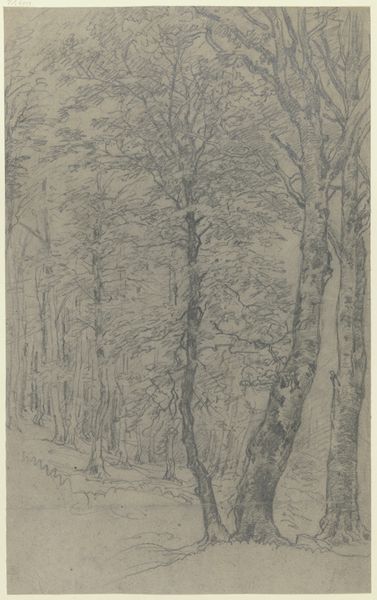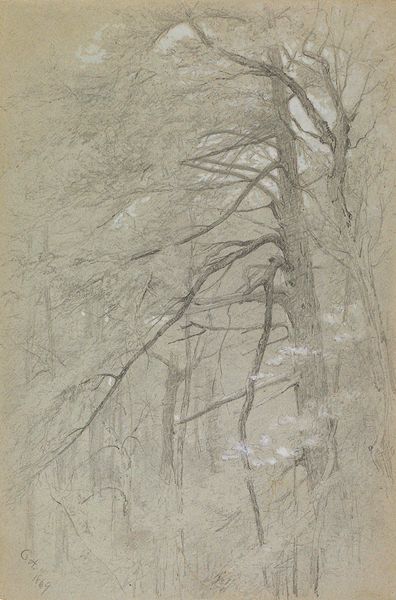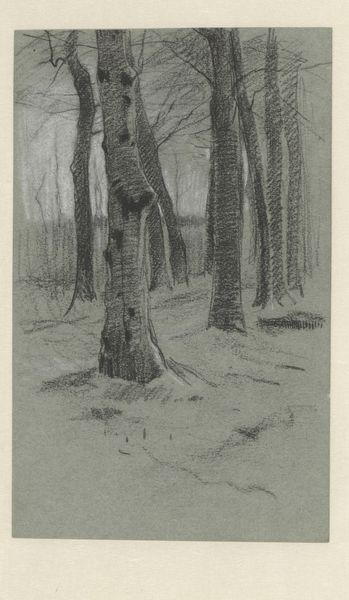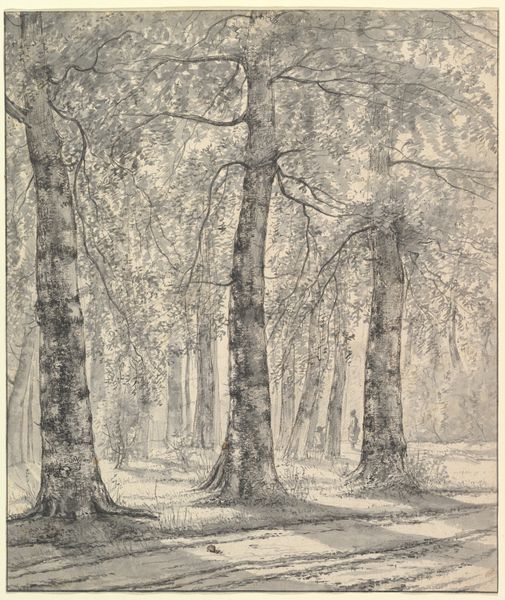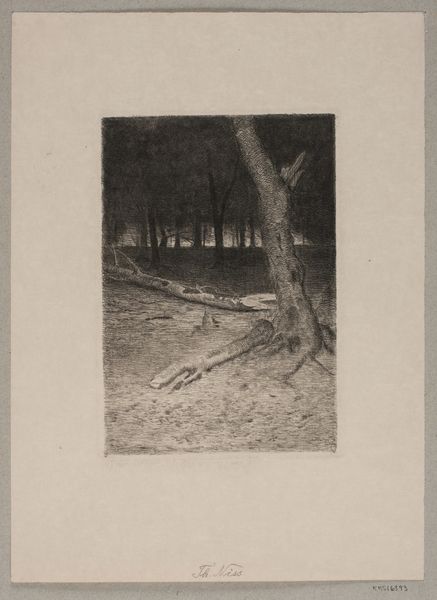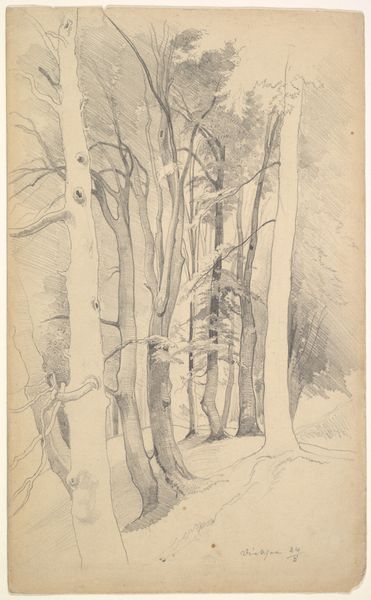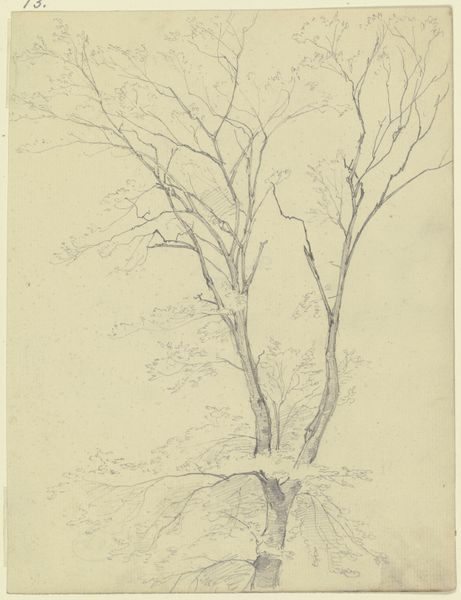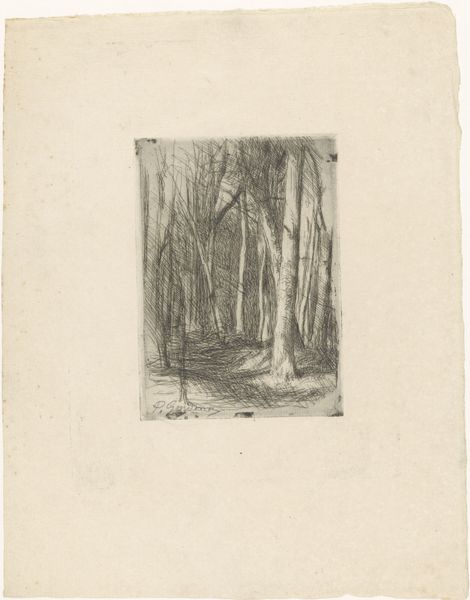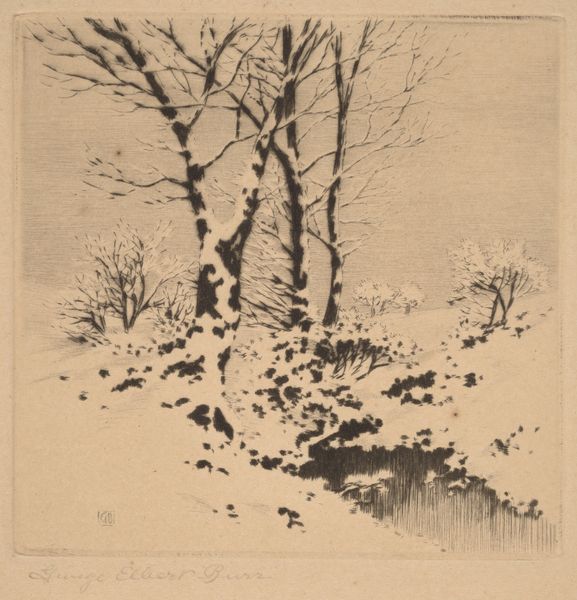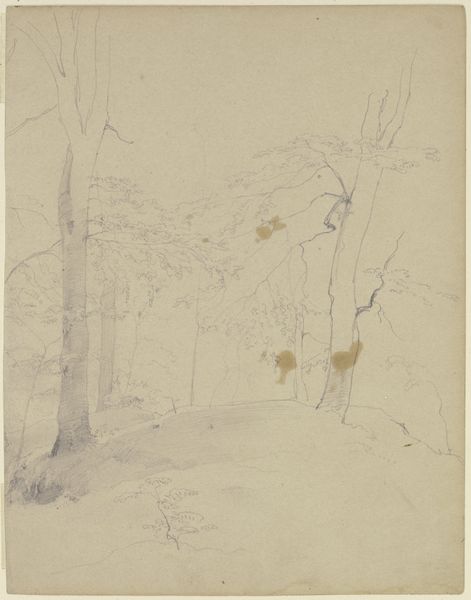
Dimensions: 11 1/4 x 8 1/2 in. (28.6 x 21.6 cm)
Copyright: Public Domain
Curator: Paul Flandrin's pencil drawing, "Forest View Near Fontainebleau," possibly created sometime between 1825 and 1902, presents a densely packed grove of trees. What strikes you initially about the work? Editor: The tonal range immediately captivates—it's so restrained. The paper seems to contribute as much to the light as the pencil does, offering a unified and quiet meditation on the formal arrangements of line. Curator: Yes, there's a quietude, isn't there? Forests often hold symbolic weight—places of transformation, hidden knowledge, or even danger. Given its location near Fontainebleau, I think it likely holds further symbolic meaning as a known enclave for artistic expression, particularly for landscape painters exploring the wilderness. Editor: The verticality is impossible to ignore. The eye is constantly drawn upwards by the insistent repetition of trunks. Even in a limited palette, this vertical emphasis communicates a silent, looming power. One cannot ignore the stark, barren limbs. Curator: They do almost resemble standing figures, don’t they? Figures stripped bare. They seem to suggest a sort of natural congregation, stripped back from life, waiting in dormancy. This could symbolize a sense of human limitation or spiritual renewal amidst the overpowering natural order. The image feels more evocative of Romantic sensibilities than straightforward representation. Editor: Exactly! It almost denies pictorial space in its commitment to flatness; its all line and form and not illusionistic window onto a 'real' place. Flandrin teases our perception with layering, but prevents true depth from ever actually solidifying. The gray-blue evokes a strange kind of optical discordance as well. Curator: Considering the artistic context around Fontainebleau at the time, with its influence on landscape painting, it suggests the idea of looking beyond merely recording the visual aspects of nature and seeking its deeper metaphorical potential. Do you feel that today, the work's romantic approach remains its most significant draw? Editor: Yes, I do. While the landscape certainly provides visual interest and formal relationships to decode, it's in its ability to abstract the experience into elemental lines of pure aesthetic and phenomenological import. It remains potent. Curator: Indeed, both a document of its time and something strangely outside of time altogether. Editor: A worthwhile encounter, to be sure.
Comments
No comments
Be the first to comment and join the conversation on the ultimate creative platform.
